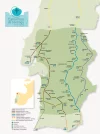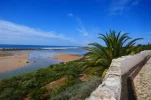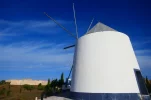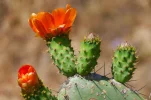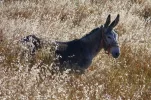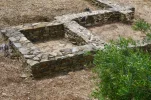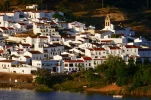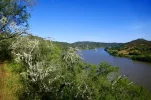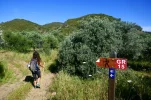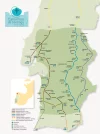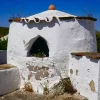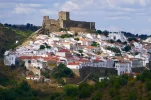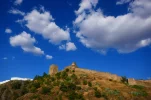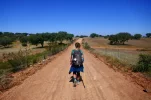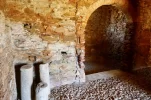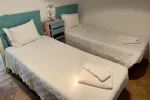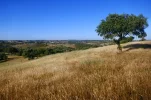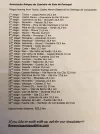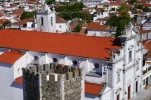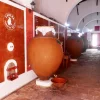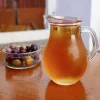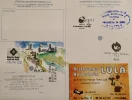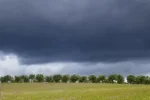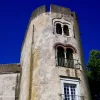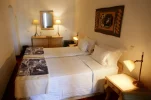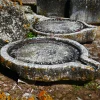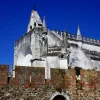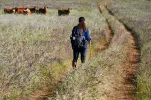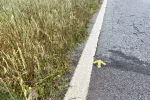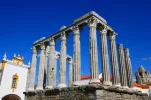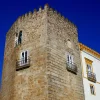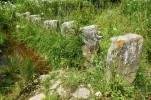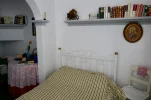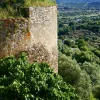- Time of past OR future Camino
- Some in the past; more in the future!
Wendy and I are in Tavira on the Algarve coast of Portugal and we’re excited to begin walking the Caminho Nascente tomorrow!
Our original plan for this spring was to walk the Mozárabe/VdlP just after Easter, but that wasn’t possible because of restrictions in Spain and the Portugal/Spain border closure. We came up with a few other plans for Spain for later in the spring but in the end, there was too much uncertainty so we decided to just walk in Portugal instead. As was the case with our CP last autumn, a primarily Portuguese camino makes sense for us again in these COVID times because we already live here, we don’t need to travel far to get to/from the camino, we’re familiar with the current virus situation and restrictions (which have been largely lifted), we have public and private health insurance etc. So another Portuguese camino it is!
The Caminho Nascente is a recently created camino from Tavira to Trancoso that is about 500km in length (and not to be confused with the camino of the same name that links Fátima with the Camino de Santiago). Our plan is to switch from the Nascente to the Caminho do Este at Guarda, two stages from the end, and walk another week or so to Chaves and the border with Spain. If the border is open by then, we can link up with the Sanabrés to reach Santiago. If not, we will return home to Lisbon and we will have walked the length of Portugal, if nothing else!
There’s very little information available on this camino (e.g. just one thread on this forum out of 55,000+ total threads!) but we have found a couple of helpful sources that have allowed us to map out a rough stage plan. I’m not sure if the entire Nascente is way-marked but at least some sections are and I have GPS tracks on my phone as a backup. For accommodation, we’ll look into options a few days in advance while we’re walking. It wasn’t hard to book places for the first few days (mostly budget hotels plus one hostel) but I assume it will be a bit more difficult once we move into more remote areas.
Our first stage tomorrow is about 26km due east from Tavira to Vila Real de Santo António, just across the Guadiana river from Spain. From there we turn northwards for the long journey to (hopefully) Santiago.
I’ll provide updates here and photos on Instagram. As part of Wendy’s Galego learning project, she is going to vlog about the camino on her new YouTube channel: Wendy Speaks Galego.
Our original plan for this spring was to walk the Mozárabe/VdlP just after Easter, but that wasn’t possible because of restrictions in Spain and the Portugal/Spain border closure. We came up with a few other plans for Spain for later in the spring but in the end, there was too much uncertainty so we decided to just walk in Portugal instead. As was the case with our CP last autumn, a primarily Portuguese camino makes sense for us again in these COVID times because we already live here, we don’t need to travel far to get to/from the camino, we’re familiar with the current virus situation and restrictions (which have been largely lifted), we have public and private health insurance etc. So another Portuguese camino it is!
The Caminho Nascente is a recently created camino from Tavira to Trancoso that is about 500km in length (and not to be confused with the camino of the same name that links Fátima with the Camino de Santiago). Our plan is to switch from the Nascente to the Caminho do Este at Guarda, two stages from the end, and walk another week or so to Chaves and the border with Spain. If the border is open by then, we can link up with the Sanabrés to reach Santiago. If not, we will return home to Lisbon and we will have walked the length of Portugal, if nothing else!
There’s very little information available on this camino (e.g. just one thread on this forum out of 55,000+ total threads!) but we have found a couple of helpful sources that have allowed us to map out a rough stage plan. I’m not sure if the entire Nascente is way-marked but at least some sections are and I have GPS tracks on my phone as a backup. For accommodation, we’ll look into options a few days in advance while we’re walking. It wasn’t hard to book places for the first few days (mostly budget hotels plus one hostel) but I assume it will be a bit more difficult once we move into more remote areas.
Our first stage tomorrow is about 26km due east from Tavira to Vila Real de Santo António, just across the Guadiana river from Spain. From there we turn northwards for the long journey to (hopefully) Santiago.
I’ll provide updates here and photos on Instagram. As part of Wendy’s Galego learning project, she is going to vlog about the camino on her new YouTube channel: Wendy Speaks Galego.









